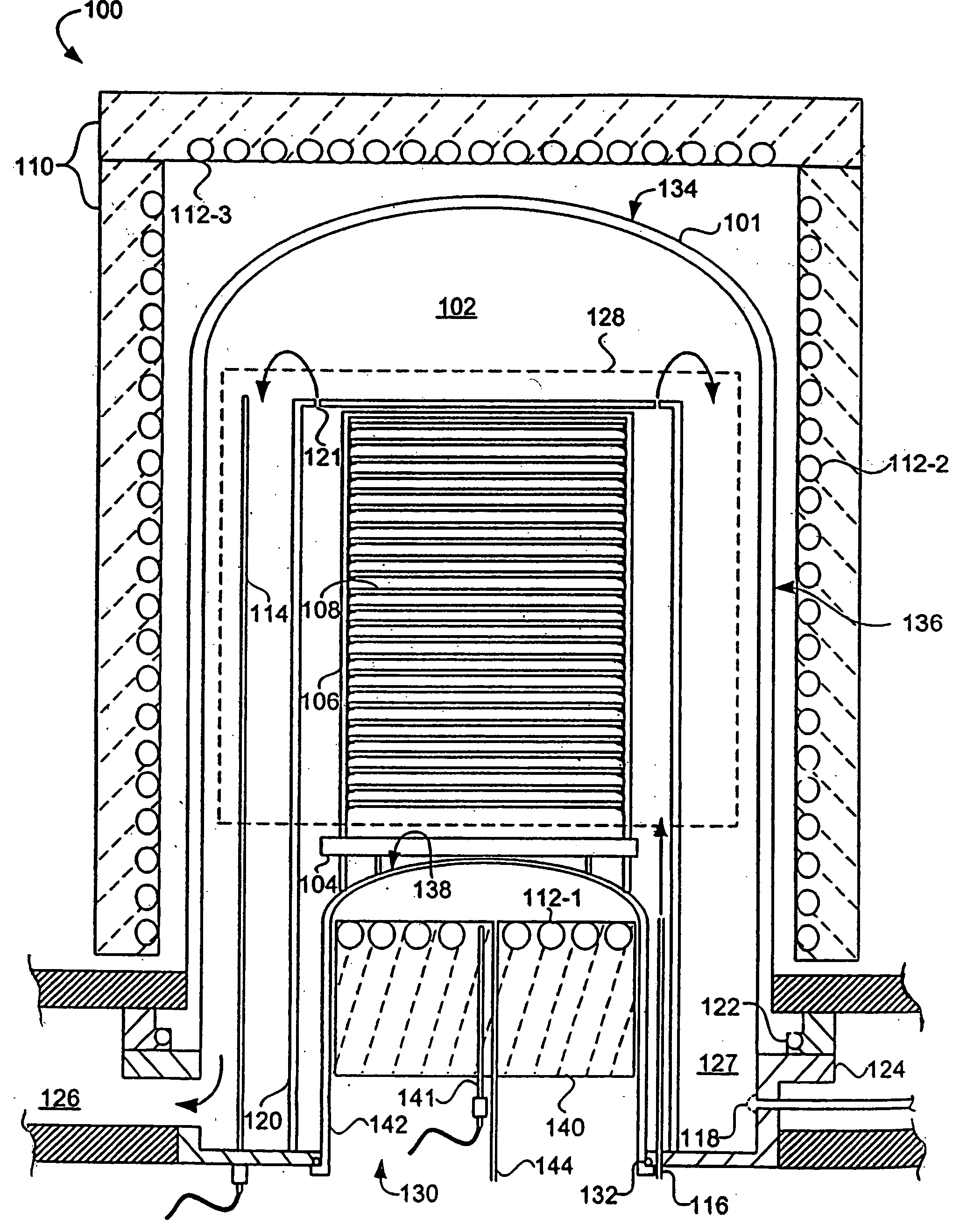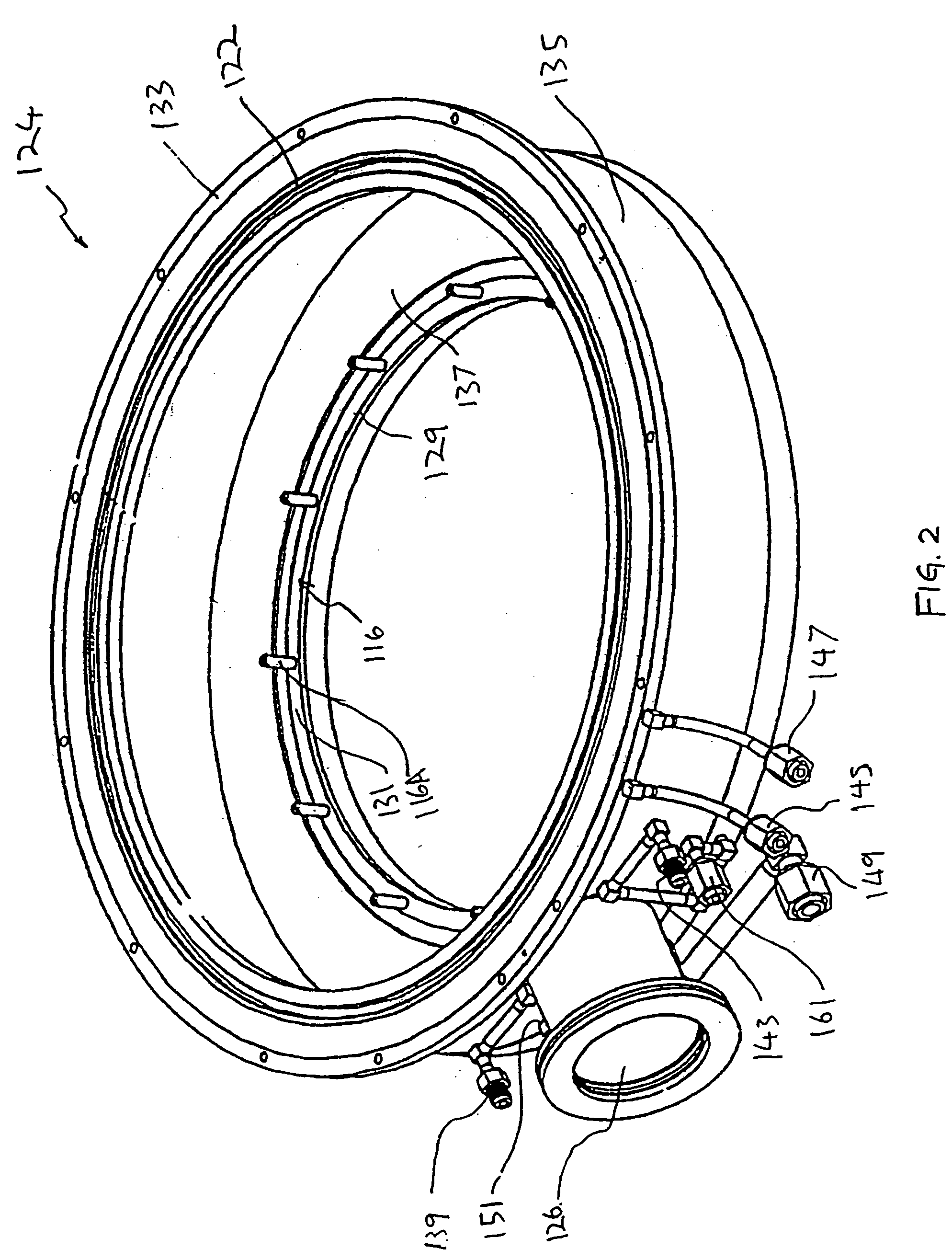Thermal processing system with cross-flow liner
a technology of cross-flow liner and processing system, which is applied in the direction of conveyor parts, transportation and packaging, coatings, etc., can solve the problems of increasing processing time, occupying a tremendous amount of space and power, and requiring considerable time both before processing, so as to reduce the gap, vortices or stagnation in the gap region that are detrimental to manufacturing processes, and improve gas flow uniformity
- Summary
- Abstract
- Description
- Claims
- Application Information
AI Technical Summary
Benefits of technology
Problems solved by technology
Method used
Image
Examples
Embodiment Construction
[0066] The present invention is directed to an apparatus and method for processing a relatively small number or mini-batch of one or more work pieces, such as semiconductor substrates or wafers, held in a carrier, such as a cassette or boat, that provides reduced processing cycle times and improved process uniformity.
[0067] As used herein the term “mini-batch” means a number of wafers less than the hundreds of wafers found in the typical batch systems, and preferably in the range of from one to about fifty-three semiconductor wafers or wafers, of which from one to fifty are product wafers and the remainder are non-product wafers used for monitoring purposes and as baffle wafers.
[0068] By thermal processing it is meant processes that in which the work piece or wafer is heated to a desired temperature which is typically in the range of about 350° C. to 1300° C. Thermal processing of semiconductor wafers can include, for example, heat treating, annealing, diffusion or driving of dopa...
PUM
| Property | Measurement | Unit |
|---|---|---|
| Fraction | aaaaa | aaaaa |
| Fraction | aaaaa | aaaaa |
| Angle | aaaaa | aaaaa |
Abstract
Description
Claims
Application Information
 Login to View More
Login to View More - R&D
- Intellectual Property
- Life Sciences
- Materials
- Tech Scout
- Unparalleled Data Quality
- Higher Quality Content
- 60% Fewer Hallucinations
Browse by: Latest US Patents, China's latest patents, Technical Efficacy Thesaurus, Application Domain, Technology Topic, Popular Technical Reports.
© 2025 PatSnap. All rights reserved.Legal|Privacy policy|Modern Slavery Act Transparency Statement|Sitemap|About US| Contact US: help@patsnap.com



